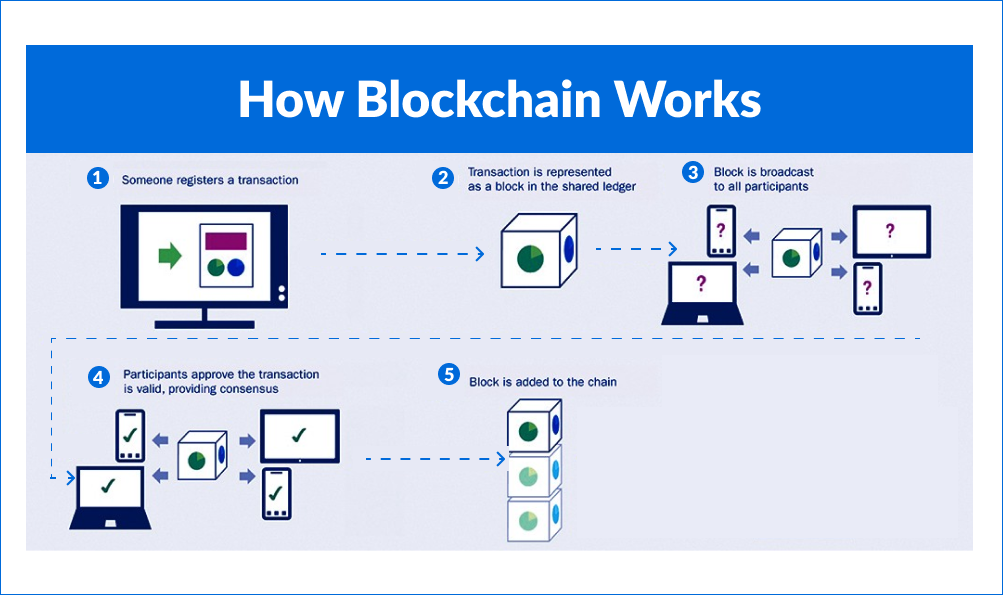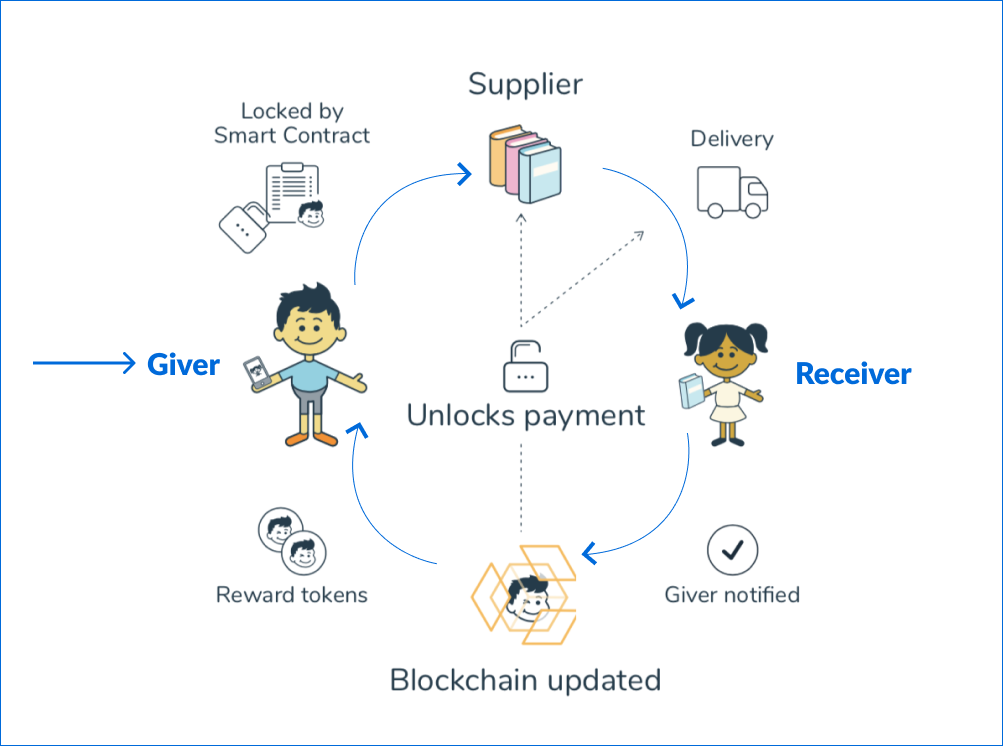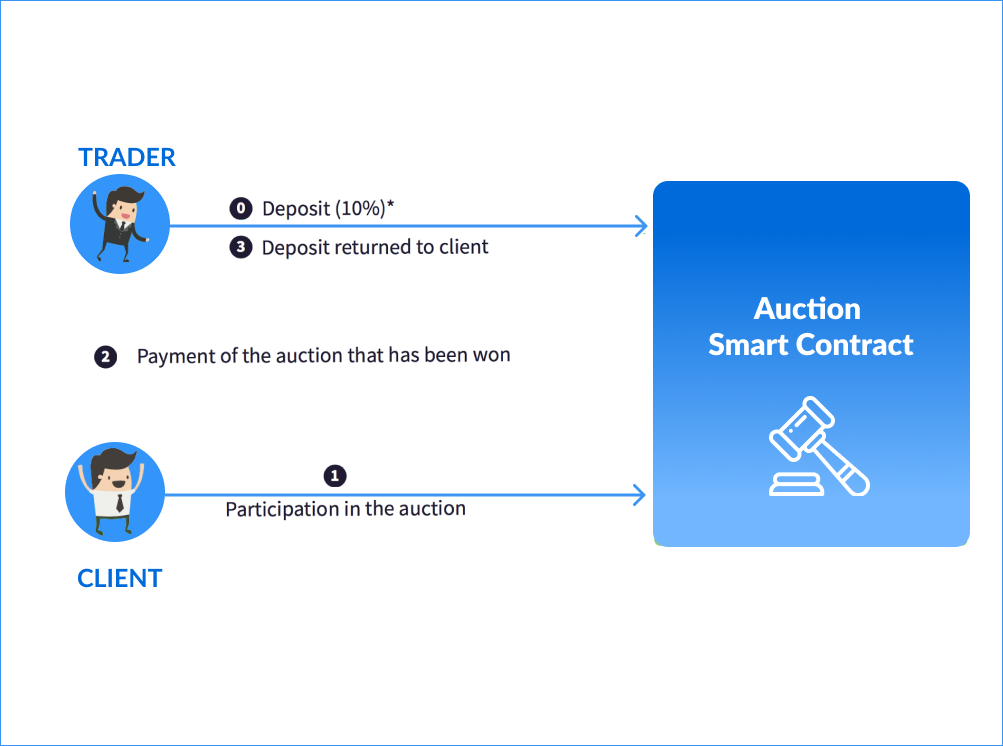Blogs/ Technology
Blockchain and its use cases

In a world where people are apprehensive about emerging technologies, Blockchain created a niche through its security and transparency. Data is one of the main aspects of any business, what if that data is decentralized, and almost everyone involved in the company can see and validate it? Trust quotient for the business increases; that is exactly what Blockchain does.
If there is a technology built for everyone to trust, Blockchain tops the list. From the time of its invention, entrepreneurs worldwide have recognized the positive impacts of this buildout
Let us have a close look at this technology and what it has to offer to various industries.
What is Blockchain?
Blockchain is a ledger database technology where data is stored in blocks and linked through digital signatures forming a chain. This chain of data is decentralized by distributing to multiple computers called nodes. It is open to everyone in the network with no single point of control, and altering the data is very unlikely. It is like you attempt to get naughty on a live TV show and expect no one notices it.
We know that blocks stores the data, let us look at what comprises a block.
Each block consists of,
Data - Timestamped data such as transactions, files, images, property rights, identities, money balances, medical records, and so on.
Hash - A digital signature created by converting the data of letters and numbers into a unique encrypted output of a fixed length.
Hash of the previous block - This is what links one block to another to form a chain.

There are three types of Blockchain
Public Blockchains: This is an all-access Blockchain where anyone can join the Blockchain network. Notable examples are Bitcoin and Ethereum.
Private Blockchains: This is an access restricted Blockchain where networks place restrictions on who is allowed to participate in the network and the transactions. Notable examples are Hyperledger, Ripple and Corda.
Hybrid Blockchains: This is a combination of both public and private Blockchain where it is decentralized. Also, it is possible to restrict the visibility of the information on the network, and notable examples are XinFin and DragonChain
Common terms in Blockchain you should know
Hash: A unique digital signature that is created by converting the data in the block into a fixed length of character
Node: A computer or server in the Blockchain network where the block data is shared.
Consensus Mechanism: An agreement that makes sure all parties are synchronized with each other and agree on adding or rejecting the block to the chain
Smart Contract: A digital contract with the terms of the agreement between the two parties that are written into lines of code and distributed to the Blockchain network to make sure that the contracts are transparent and tamper-proof.
How Blockchain Works?
Now that you know what Blockchain is let us take a look at how it works
Blockchain starts by including all parties through equally privileged computers, also called nodes, to form a peer to peer network. A consensus mechanism is defined to suit business to validate and approve the data in the block, and then block is created. The first block created is called the Genesis block. This block has the index of all blocks, and new blocks are added whenever information needs to be recorded.
Blocks can store any type of data from start to finish or even a single transaction. The data in the blocks are converted using a mathematical algorithm (Cryptography) to create a digital signature called Hash.
The Genesis block will not have a hash of the previous block, and all the subsequent blocks will have the signature of the previous block forming a chain. Since the Hash created converting the data inside the blocks, any change to the data inside the block will cause the Hash to change, making all the corresponding blocks invalid since the Hash in the subsequent block and the current block won’t match, and the changes are detected easily.
Through its distributed ledger, any change to the blocks notifies all the parties, and they can approve or reject based on the legitimacy of the change, changes have to be approved by at least 51% of the nodes.

Use cases of Blockchain
Beyond digital currencies, this technology has more of a general application with its capacity to function as a distributed ledger tracking and recording the exchange of any form of value. The bitcoin success has been the stimulus for other applications and has played a significant role as a large scale proof of concept.
The technology is eminent for its use in the networks of Cryptocurrencies, but its decentralized and secure characteristics make it a robust tool for several other industries. Therefore, it is imperative to learn the application of this innovative technology in different areas.
The decentralized network can be customized as a transparent database, visible by all participants, providing a distributed and unified record. Blockchain can be used to store any data that needs to be open and secured.
Let us dive into the top few use cases of Blockchain.
Charity

Charity is one of the industries where misconducts are bound to happen; people lose trust and are unwilling to give to charity. The high cost involved to transfer funds and to operate in countries that require developmental aid is another problem that charity organizations face. Blockchain technology can help charity foundations to optimize the process of receiving and managing funds transparently and securely also by minimizing transaction and administration costs.
E.g., World Food Program, Alice Funding Platform, Amply — School Subsidies
Auction

The Blockchain plays a considerable role in the auction world. Auctioneers have understood the benefits that Blockchain has to offer. The best place to run an auction is a decentralized platform so that the owners of the company can have direct entry to this occurrence. Users can auction off anything on the chain that is available to them. The smart contract takes the auctioned asset, and after that, it manages bids associated
E.g., Christie's and Artory
Supply chain monitoring

Blockchain can abridge the complex and disintegrated process in the supply chain by creating transparency in the transactions and documentation through Smart contracts. It helps to maintain a decentralized record of sales and procedures of all the departments right from the production to goods delivery. Therefore any setback can be promptly identified and rectified.
E.g., Walmart, Maersk, British Airways, UPS and FedEx
Real estate

Blockchain efficiently maintains a record of all documents involved in real estate digitally. Implementation of this Blockchain in real estate can reduce fraud, increase privacy, accelerate transactions. The overall process of property management can be performed securely and transparently through smart contracts.
E.g., PropertyClub, ManageGo, RealBlocks, Meredio, etc.
Healthcare

Blockchain technology in healthcare is used to store patient information on a distributed ledger, which allows conditional access to different stakeholders to a single source of truth where all interaction with a patient’s health data is recorded with a time-stamp. The patient’s health information is secure since the data is encrypted; this offers patients more control over their health records.
E.g., Change Healthcare, SimplyVital Health, Taipei Medical University, FarmaTrust
Food Safety

Blockchain technology can reconfigure and regulate the whole of data management processes across a multiplex network of players in the food industry. The food industry is devoid of transparency and trust; Blockchain helps to detect mishaps in the exact spot where it surfaces. With the traceable characteristics of Blockchain, consumers can have the trail of their food from farm to table. Furthermore, regulators can trace and manage the source of food-borne illnesses, and it also fosters accountability among food producers.
E.g., Transparent Path, Greenfence, Hungry Coin, etc.
Disadvantages of Blockchain
We spoke about what is Blockchain and its use cases, it wouldn’t be fair if we don’t cover few shortcomings.
As with every technology, Blockchain has few drawbacks too. Let us go over a few disadvantages of this technology below.
Complex technology
Despite Blockchain's Increasing popularity, still many companies aren't aware of all the technical terms, and there is no approved documentation which helps investors or even the general audience to understand this technology. There are fewer certified Blockchain experts in the market; the available ones are diligently working and unable to spread awareness.
Speed
Since all the transaction has to be verified and validated by each of the nodes, the processing speed is comparatively low as computation happens across the nodes, backlogs of transactions are built at the nodes in the network making computation far slower than on a traditional centralized database systems, they can validate only a limited transactions per second.
Uncertain Regulatory status
There is a lack of regulatory control, therefore scams and market manipulation are bound to happen as the security relies on the integrity of the peers in the network.
Human Error
Human error could lead to huge loss of trust: If a blockchain is used as a database, the information going into the database needs to be 100% accurate. The data stored on a blockchain is not innately reliable, so information needs to be recorded precisely to begin with.
Data Storage
Data can be stored in many ways on a blockchain. However, not all of them are optimal, considering that a huge amount of data is stored on the blockchain. To ensure proper storage, it is advised to use data storage solutions such as IPFS Private Network, Bigchain DB, and AWS Quantum Ledger.
51% attack
This is a notable security flaw in blockchain i.e If more than half of the nodes (51%) are malicious, the technology is set in such a way that it is bound to become the truth.
Parting thoughts
As a distributed ledger technology, Blockchain is competent enough to provide advanced security, transparency, accountability, and efficiency. The technology strengthens privacy and imparts trust creating an internet of value for the users to perform limitless peer-to-peer transactions. Blockchain technology not only holds the potential to transform all kinds of industries but also allows people to secure digital relationships and helps them to become the business leaders of their respective industries.





